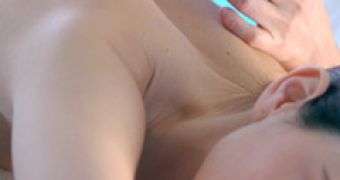The Chinese people has been successfully employing acupuncture for over 4 millenia. Now, the western world has also started to discover its benefits. Acupuncture seems to be the best way of relieving hot flushes present in breast cancer patients treated with the anti-estrogen tamoxifen following operation, as revealed by a new research recently presented at the 6th European Breast Cancer Conference in Berlin.
"Breast cancer patients who received traditional Chinese acupuncture had a 50% reduction in hot flushes, both during the day and the night, and this effect continued after acupuncture ceased. Acupuncture is increasingly used in western countries to treat the problem of hot flushes in healthy post-menopausal women, so we wanted to see whether it was effective in women with breast cancer suffering from hot flushes as a result of their anti-estrogen medication," said co-author Jill Hervik, a physiotherapist and acupuncturist at the Vestfold Central Hospital (T?nsberg, Norway).
It is known that tamoxifen induces some of the symptoms typical for menopause, like hot flushes. Hormone replacement therapy is out of discussion in the case of breast cancers, as it boosts the risk of relapse.
The trial was made on a poll of 59 breast cancer patients, all operated, postmenopausal and taking tamoxifen. The subjects underwent either 10 weeks of traditional Chinese acupuncture or sham acupuncture between March 2003 and December 2006. The treatment atmosphere was kept neutral (no soft music and minimal talking to the patients) so that the placebo effect was reduced as much as possible.
The subjects declared the number of hot flushes experienced in the 4 weeks before the trial, during the trial and during a 12-week follow-up period. The Kupperman Index assessed other menopausal symptoms like sweating, sleep problems, depression, dizziness, palpitations, joint pain, headache, vaginal dryness and others. The volunteers were subject to real acupuncture and the sham acupuncture twice a week during the first 5 weeks of the trial and once a week during the next 5 weeks.
In the case of the Chinese acupuncture, needles were inserted to a maximum of 3 cm (1.2 in) at precise acupuncture points, while in the case of the sham acupuncture, they were inserted more shallowly and in non-acupuncture points.
"During the treatment, hot flushes were reduced by 50%, both day and night, in the acupuncture group. Three months after the last treatment a further reduction was seen. No significant changes were seen in the sham group during the day. At night there was a slight reduction during the treatment period but, once treatment had ceased, the number of hot flushes increased again. This effect was paralleled in the scores from the Kupperman Index for the real acupuncture group, with a slight reduction also in the sham group. However, once treatment ceased the scores remained lowered for the treatment group, but increased for the sham group," said Hervik.
"Acupuncture seems to provide effective relief from hot flushes, both day and night, for women taking tamoxifen after surgery for breast cancer. This treatment effect seems to coincide with a general improvement in well-being. Acupuncture has two advantages over other treatments for hot flushes: it is cheap and does not cause adverse side-effects. Our results suggest that acupuncture could be used more widely for treating breast cancer patients suffering from symptoms related to their anti-estrogen medication," she added.

 14 DAY TRIAL //
14 DAY TRIAL //